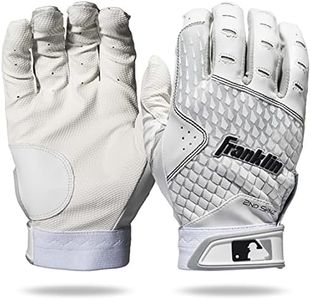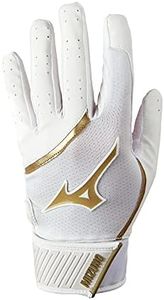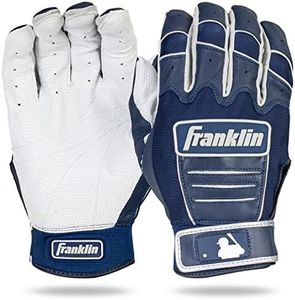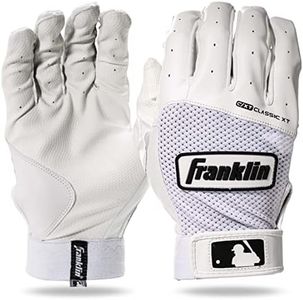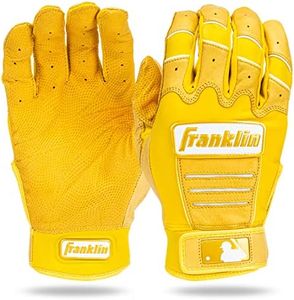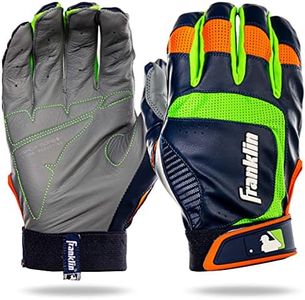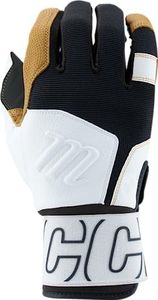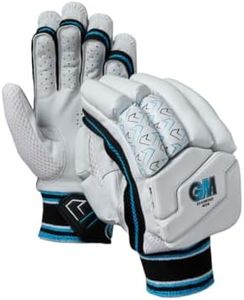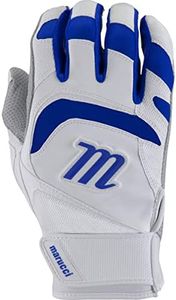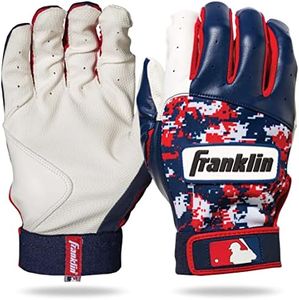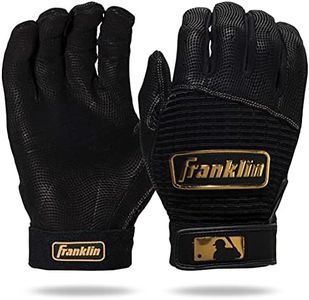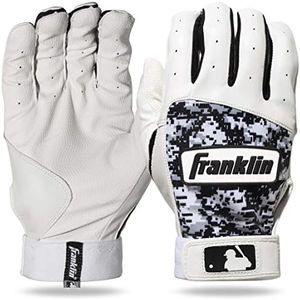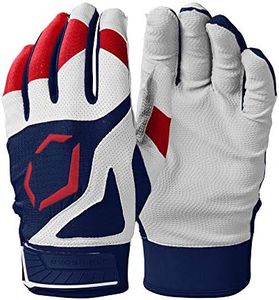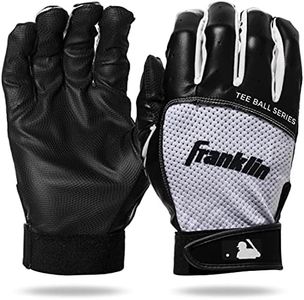We Use CookiesWe use cookies to enhance the security, performance,
functionality and for analytical and promotional activities. By continuing to browse this site you
are agreeing to our privacy policy
10 Best Youth Batting Gloves
From leading brands and best sellers available on the web.Buying Guide for the Best Youth Batting Gloves
When picking youth batting gloves, it's essential to focus on comfort, protection, and grip. The right pair can boost confidence and performance at the plate, while the wrong fit can lead to discomfort or even blisters. Since young players have different needs from adults, pay close attention to how the gloves fit and feel, as well as how well they allow your child to handle a bat.Size and FitSize and fit refer to how snugly the glove fits on the hand, which is critical for performance. A good fit allows for natural movement and keeps the glove from bunching, spinning, or slipping while batting. Youth batting gloves come in various sizes, usually represented by age or specific hand measurements. Too loose, and the glove won't provide a good grip or control; too tight, and it can restrict movement and cause discomfort. To find the right size, measure from the base of the palm to the tip of the middle finger, then refer to manufacturer guides. If your child is between sizes, it's usually better to size up for growing room, but the glove should still fit securely.
MaterialThe material in batting gloves affects comfort, durability, and grip. Common materials are leather, synthetic leather, and combinations of both. Leather offers excellent grip and breathability and breaks in to fit the hand more precisely, whereas synthetics tend to last longer and can handle repeated washing. Some gloves combine materials for the advantages of both. Consider leather for a more tailored feel and superior grip, especially if the priority is performance, or synthetics for easy care and durability—perfect for repeated practices.
Palm GripPalm grip refers to how well the glove's inside surface helps the player hold onto the bat. Grip can be enhanced by textured patterns, special materials, or reinforced patches. A better grip reduces slippage, increasing control of the bat and reducing the risk of blisters. Players who struggle with sweaty hands or lose their grip easily should focus on models with textured palms or additional grip enhancements. If batting control is already good and blisters aren't an issue, a simple smooth leather palm can suffice.
Padding and ProtectionPadding adds a layer of protection against vibration and potential impact from the bat or a mis-hit ball. Some youth batting gloves have extra padding in the palm or finger areas, while others prioritize a thinner, more lightweight build. Thicker padding can be helpful for players experiencing hand discomfort or frequently hitting the ball off-center, but too much padding may make the glove bulky or interfere with feel. Choose more padding if your child is prone to hand stingers, otherwise, a slimmer glove can provide better bat control.
Wrist ClosureThe wrist closure is how the glove secures around the wrist, typically with Velcro straps or elastic bands. An adjustable closure allows for a custom fit, keeping the gloves snug without cutting off circulation. A secure closure also prevents dirt and debris from getting inside. If your child prefers an easy-on, easy-off style, elastic may suit them best. For kids who need a tighter, more secure fit for quick movements, an adjustable Velcro strap is usually better.
BreathabilityBreathability involves how well the gloves allow air to flow and prevent sweaty, slippery hands. Materials like mesh or perforated sections on the glove can help with ventilation. If your child tends to sweat a lot or plays in hot weather, look for gloves with breathable panels or moisture-wicking linings. This can help prevent hands from becoming too hot or slippery during a game.

